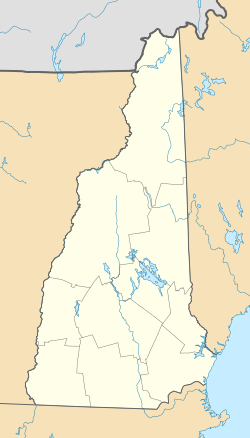Hebron Village Historic District facts for kids
Quick facts for kids |
|
|
Hebron Village Historic District
|
|
 |
|
| Location | Roughly bounded by Hebron Village Cemetery, N. and W. Shore Rds., Hobart Hill and Groton Rds., Hebron, New Hampshire |
|---|---|
| Area | 24.8 acres (10.0 ha) |
| Built by | MacDougall, Gordon; Et al. |
| NRHP reference No. | 85000492 |
| Added to NRHP | March 7, 1985 |
The Hebron Village Historic District is a special area in the small town of Hebron, New Hampshire. It's like a time capsule showing how the village looked long ago. This district was officially added to the National Register of Historic Places in 1985. This means it's recognized as an important historical site in the United States. Later, in 2016, several buildings within the district were also added to the New Hampshire State Register of Historic Places.
Contents
Exploring Hebron Village's History
This historic district includes the town common, which is like a central park, and the local cemetery. It also features buildings right next to these areas. Imagine a small, old village center, and that's what you'll find here.
Buildings in the District
The district has thirteen main buildings. Four of these are public buildings, used by the community. Eight are homes where people live, and one used to be a store. Some of the public buildings have changed their purpose over time. For example, the town hall was once a chapel built in 1909. The public library was built in 1915 as a grange hall, a place for farmers to meet. Most of the houses in the district were built a very long time ago, in the early 1800s.
How Hebron Village Began
The town of Hebron officially became a town in 1792. It was formed from parts of other nearby towns. One of the first public places created was the village cemetery. It was set up soon after the town was formed. The town common, the central green space, was bought by the town in 1799.
Why the Location was Important
The village common was placed in a smart spot. It was close to Newfound Lake and the Cockermouth River. This river flows into the lake not far from the village. In the past, lakes and rivers were like highways. They were important for travel and moving goods.
Growth and Changes Over Time
During the 1800s, Hebron Village grew and became busy. This was partly because small factories started up on a nearby stream. These factories used water power to run their machines. The town common stayed mostly the same over the years. One big change was when a part of it was given away in 1839. This land was used to build Hebron Academy, a school.
Recognized Historic Buildings
In 2012, seven buildings in the district were added to the New Hampshire State Register of Historic Places. These buildings are:
- Elliot House (located at 6 Hobart Hill Road)
- Hebron Academy (located at 7 School Street)
- Meadow Wind (located at 41 North Shore Road)
- Memorial Chapel & Grange Hall (located at 8 Church Lane)
- Noyes House (located at 2 Church Lane)
- The Parsonage (located at 34 North Shore Road)
- Powers House & E. Adams Study (located at 14 Church Lane)
These buildings are important parts of Hebron's history. They help us understand what life was like in the past.



